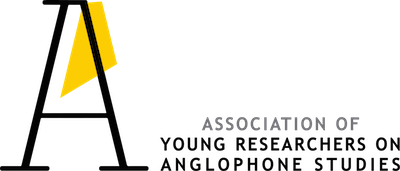Nin o Chithaeglir Lasto Beth Daer; Rimmo Nin Bruinen Dan In Ulaer!: The Celtic Elements in The Lord of the Rings (pp. 163-174)
Noelia Ramos Soria
Universidade de Vigo
Abstract
The Lord of the Rings (1954-55) world has been subject to numerous studies and comparisons that have sought to establish a link with all those cultural elements that may have influenced its creation. While Norse mythology has been commonly accepted as one of the main references in the creation of Tolkien’s fictional world, the role of cultural and mythological elements of Celtic origin has aroused some controversy. The aim of this study is to highlight those elements of The Lord of the Rings that are closely related to the Celtic world and to highlight their connection, whether intentional or unintentional, and how some of the artistic design aspects of Peter Jackson’s trilogy have brought out or reinterpreted aspects of the original work in a Celtic key. The methodology is based on the traditional empirical scientific method through the detailed study of the film pieces that make up the Lord of the Rings and the three books. It is evident, therefore, that, despite Tolkien’s irrational dislike of Celtic, there are several concepts and features of the cultures that cohabit in Middle-Earth where numerous echoes of that culture resonate. For the most part, these are unconscious and unintentional choices, and they underline the persistence of Celtic culture even in the last two centuries.
Keywords: The Lord of the Rings; J.R.R. Tolkien; Celtic culture; English literature; Celticism.
Bionote
Noelia Ramos Soria (Lleida, 1996) graduated in English Studies and is currently working on her PhD, which explores and analyses the connections between J.R.R. Tolkien’s The Lord of the Rings (and its deviations) and the Welsh and Irish folklore and mythology. She is also working as a high-school English teacher and has published The Little Leprechaun: Una propuesta de libro electrónico para la enseñanza de inglés en la secundaria a través de las ilustraciones (2021), a different take on teaching English as a second language through a more creative and artistic scope.
e-mail address: author@mail.com
References
Auer, Robin-Markus. “Sundering Seas and Watchers in the Water: Water as a Subversive Element in Middle-earth.” Sub-creating Arda: World-building in J.R.R. Tolkien’s Work, its Precursors, and its Legacies, ed Dimitra Fimi and Thomas Honegger, pp. 237-259. Zurich, CH and Jena, DE: Walking Tree Publishers, 2019.
Blamires, Steve. 2005. Magic of the Celtic Otherworld: Irish History, Lore & Rituals. St. Paul, Minnesota: Llewellyn.
Bueno Alonso, Jorge Luis, ed. 2022. Tolkien in the 21st Century: Reading, Reception, and Reinterpretation. Newcastle, UK: Cambridge Scholars.
Burns, Marjorie. 2015. Perilous Realms: Celtic and Norse in Tolkien’s Middle-Earth. Toronto: University of Toronto Press.
Carey, John. 1987. “Time, Space, and the Otherworld”. Proceedings of the Harvard Celtic Colloquium, 7: 2-4.
Carpenter, Humphrey, ed. 1981. The Letters of J.R.R. Tolkien. UK: George Allen & Unwin.
Clarke, B.F.L. 1973. Life of Merlin: Vita Merlin. Cardiff, UK: Wales University Press.
Fimi, Dimitra. 2006. “Mad Elves” and “Elusive Beauty”: Some Celtic Strands of Tolkien‟s Mythology‟. Folklore, 117.2: 1-21.
Fimi, Dimitra. 2007. “Tolkien’s “Celtic’ type of legends”: Merging Traditions. Folklore, 4.1:1-15.
Flieger, Verlyn. 2005. Interrupted Music: The Making of Tolkien’s Mythology. Kent, OH: Kent State University Press.
Gálvez Gómez, Laura. 2022. “Fairy Women in J.R.R. Tolkien’s The Lord of the Rings and Their Arthurian Counterparts.” Tolkien in the 21st Century: Reading, Reception, and Reinterpretation, ed Jorge Luis Bueno-Alonso, pp. 160-174. Newcastle: Cambridge Scholars.
Haase, Donald. 2008. The Greenwood Encyclopedia of Folktales and Fairy Tales. Westport: Greenwood Press. Vol. 1.
Jackson, Peter, dir. The Lord of the Rings: The Fellowship of the Ring. 2001.
Lyman, Thomas. 2014. “Celtic: “Celtic Things” and “Things Celtic”―Identity, Language and Mythology”. A Companion to J.R.R. Tolkien, ed Stuart D. Lee, pp. 272-286. Chichester, UK: John Wiley & Sons.
Marlory, Thomas. 2016. Le Morte D’Arthur. Web. <https://www.gutenberg.org/files/1251/1251-h/1251-h.htm>[Accessed on January 29, 2023]
Miller, Dean. 2014. Legendary Creatures and Monsters. New York: Cavendish Square Publishing.
Nozick, Daniel. 2017. “Arthurian Influence on The Lord of the Rings.” Philologia 9: 1–6. https://doi.org/http://dx.doi.org/10.21061/ph.v9i0.210.
Paton, Lucy Allen. 1970. Studies in the Fairy Mythology of Arthurian Romance. Boston, Massachusetts: Ginn.Tolkien, J.R.R. 2008. The Lord of the Rings: The Fellowship of the Ring. London: HarperCollins Publishers.

This work is licensed under a Creative Commons Attribution 4.0 International License.

